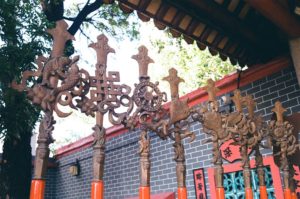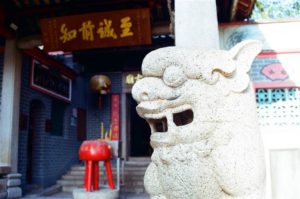The Hau Wong Temple of Kowloon City

I stopped by the Hau Wong Temple of Kowloon City after visiting the Stone House Family Garden just across the street on Junction Road. Even when I passed by the temple, I was quite amazed at how well-kept it was. So I decided to take a look.

The Hau Wong Temple of Kowloon City has been a Declared Monument in 2014 under the Antiquities and Monuments Ordinance (Cap. 53). Its long history in Kowloon City stands out amongst the many other temples in Hong Kong. According to government sources, “Hau Wong Temple was patronised by Qing officials and soldiers from the Kowloon Walled City when it [they] guarded the territories between 1847 and 1899.” Like the Stone House Family Garden next door, Hau Wong Temple’s history is closely tied with the Walled City of Kowloon, only that it goes even further back in time.
Relics and Structures of the Hau Wong Temple in Kowloon City
This tie with the Walled City of Kowloon has enriched the heritage of the temple. There are some important relics from the Qing Dynasty still gracing the temple grounds. This following incense burner was a gift from the first Assistant Magistrate of Kowloon, Xu Wenshen, in 1847.
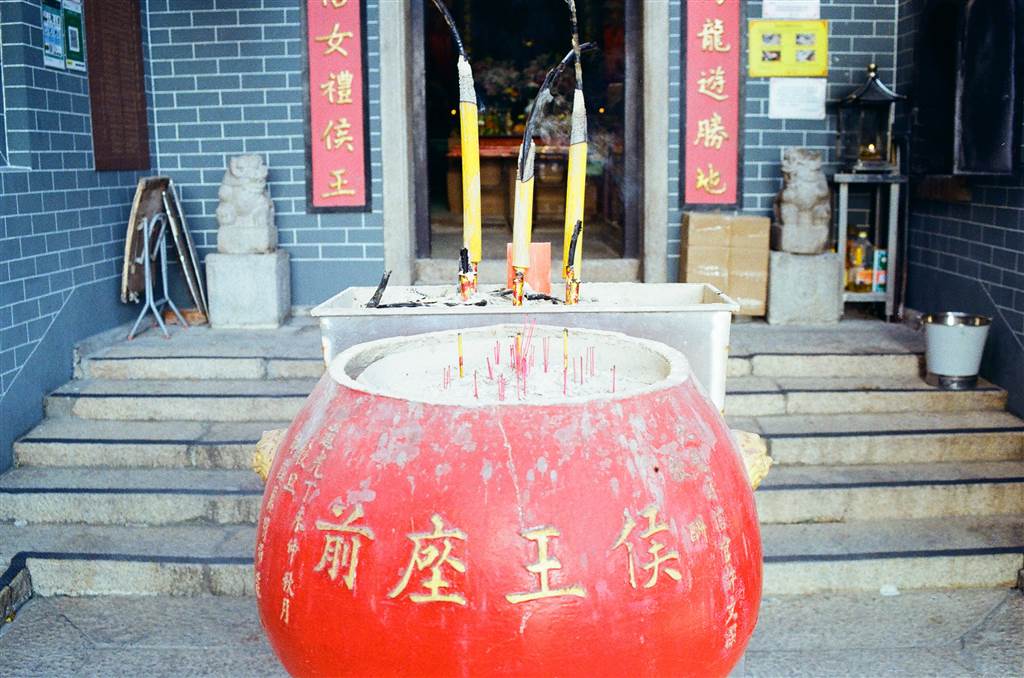
This wooden plaque that hangs in the forefront of the Main Hall dates to the 6th year of the Guangxu Reign (1880) during the Qing Dynasty. It was a gift from the Qing military vice general, Lai Zhenbian, who guarded the Walled City of Kowloon. In Chinese it means “when you have reached the state of pure sincerity, you will have foresights into the future.”
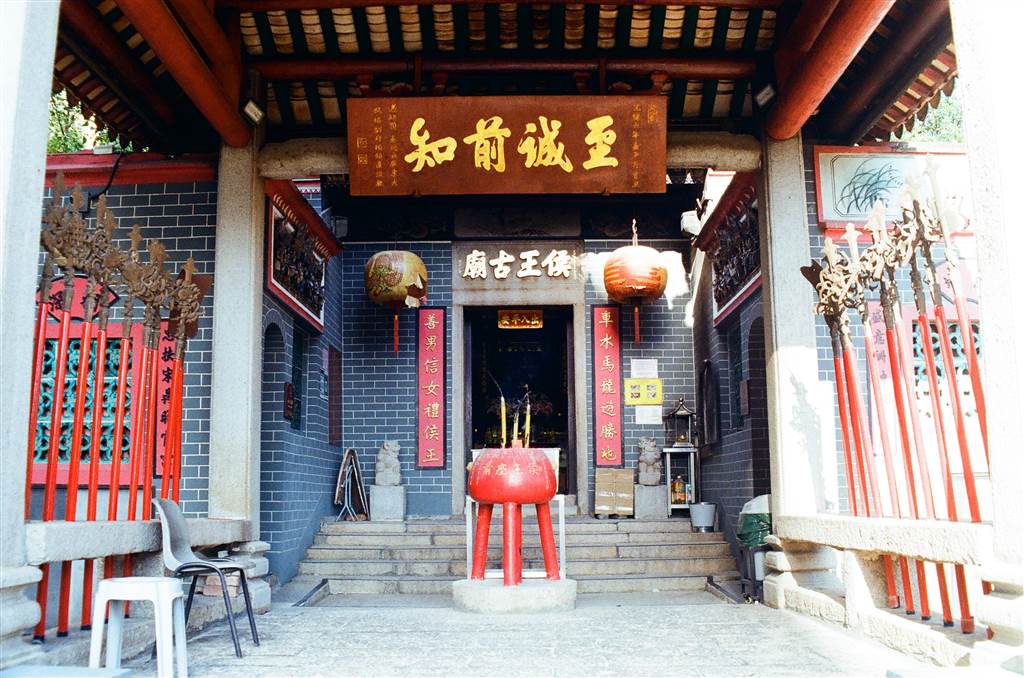
There is one main hall at the temple. It was the original structure on the temple ground. The side chambers have existed in a later time. They consist of the Buddha Hall, the Lung Wah hall, and the Luohans Hall.
Of all the side halls, I was most amazed by the Luohans Hall. It felt like a grotto inside, with the 18 Luohan (the eighteen guardians of the Buddha) statues. They were the enlightened students of Buddha, and have reached nirvana. However, their role in the religion was to teach Buddhism to the common people’s enlightenment. Therefore the earth was their proper dwelling. In Hindu Buddhism, there are 16 Luohans only. The Chinese adaptation of Hindu Buddhism has an additional two more.
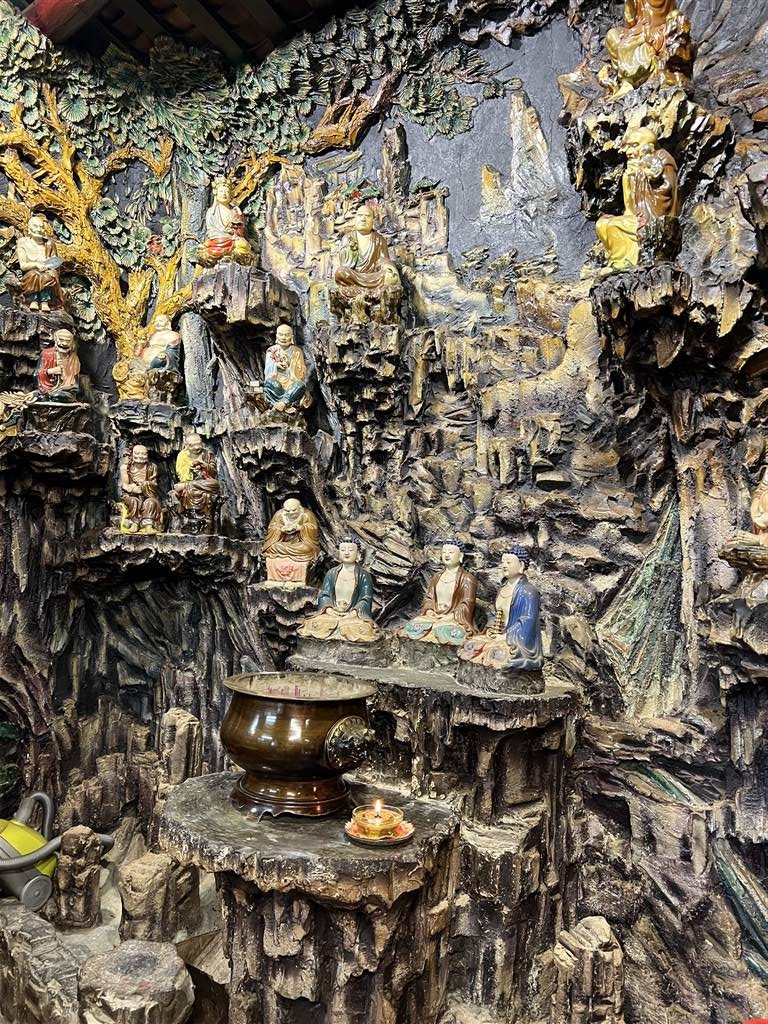
This Luohans chamber in Hau Wong Temple recreates a scene of the Luohans on earth, surrounded mostly by mountains. This comports with their mission as the Buddha has given them. They would live on earth but sustain their living as provided by believers and nature. In a distance, however, there is a scene of heavens in this recreation.
Outside the Luohans Hall and the Buddha Hall, you will see the Shiwan Ceramic Figurines. There is a good chance that this depicts a scene of the 18 Luohans. But I have no source to verify this (I am poorly trained in Chinese traditions).
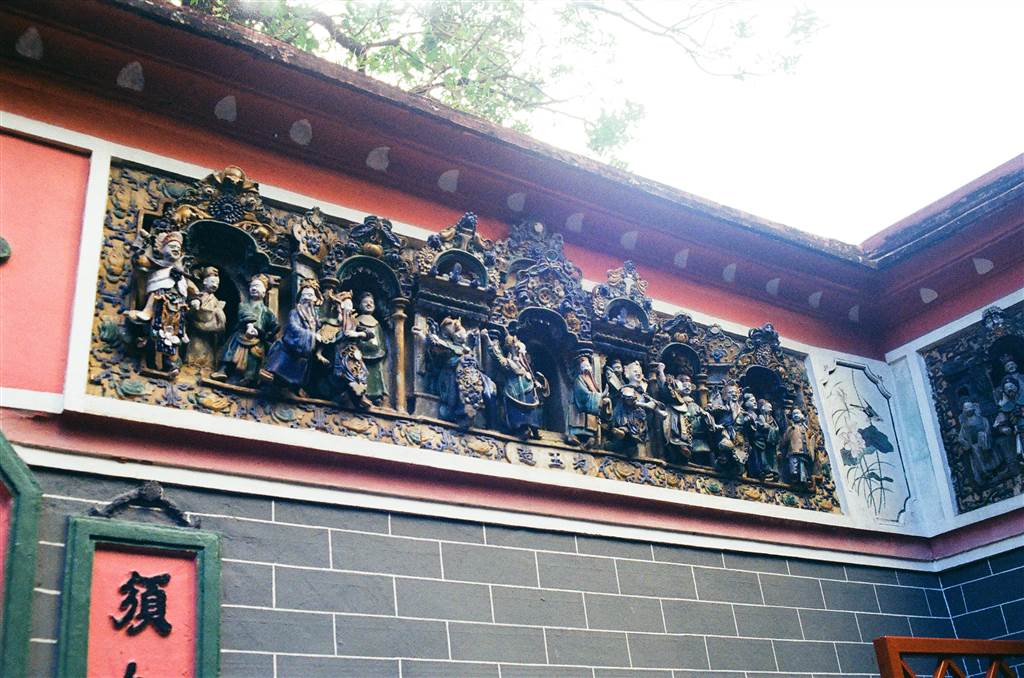
The Stone Tablet of Hau Wong Temple lies to the right of the main hall. This might be the oldest stone tablet of all on site. The carvings are no longer visible.
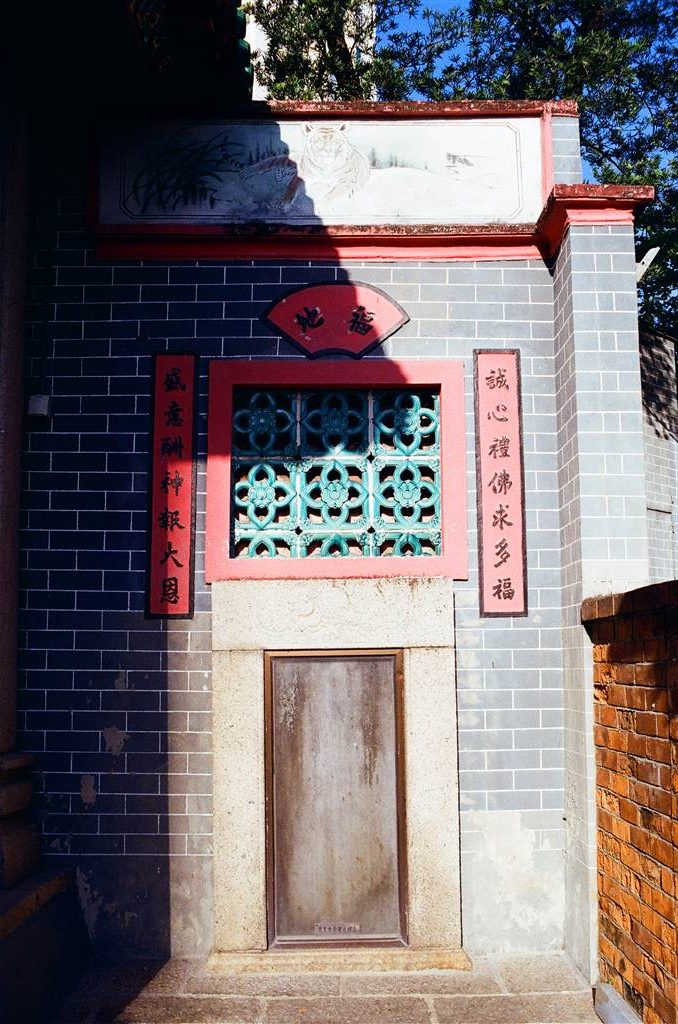
The backyard remains closed on the day of my visit. I believe that is where the stone inscription of the Chinese character, “goose” lies. The special feature of this inscription is that the character was brushed in one stroke by a calligraphy master. The inscription dates 1888, and it is a very special relic.
The Resident Deities at the Hau Wong Temple
There are a few interpretations of who Hau Wong was. I have previously written on perhaps the most credible interpretation of Hau Wong’s history in the Hau Wong Temple of Tung Chung. According to the Wikipedia, a late Qing scholar believed that Hau Wong was the famous general Yang Liangjie. He defended the Song Dynasty’s last emperors against Yuan Dynasty forces in the Tai O area of Hong Kong. Other interpretations included one villager by the name of Yang that healed Song Emperor Dai Bing of his insomnia.
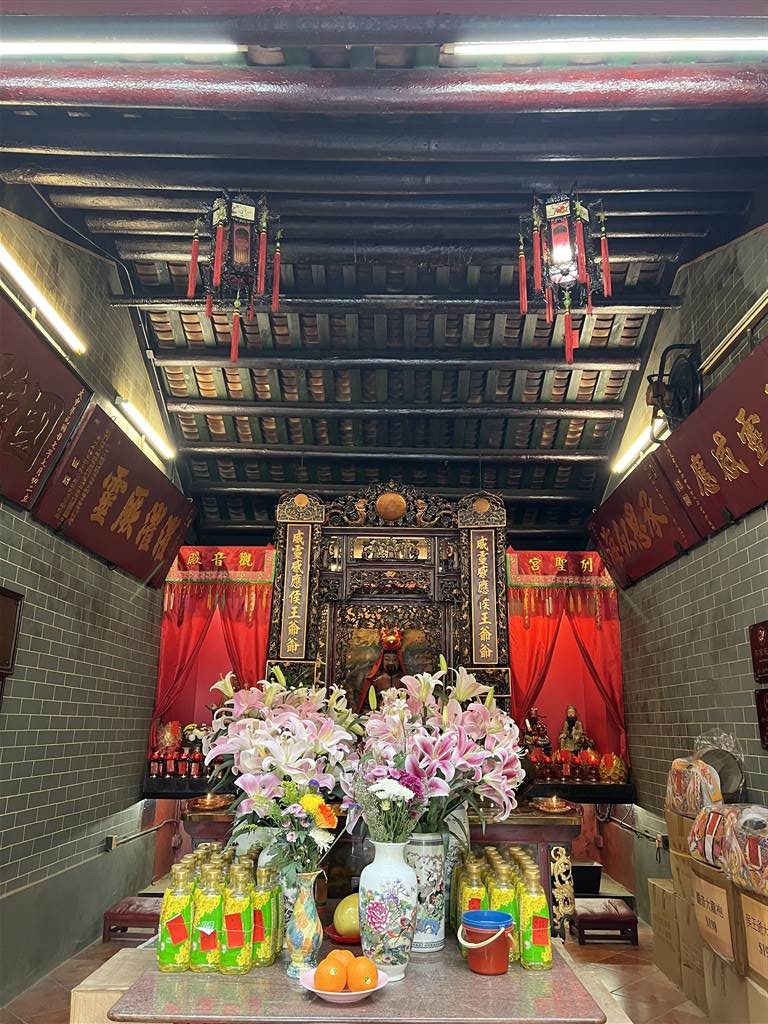
Besides worshipping Hau Wong, the temple also serves other deities. There are, namely, Kwun Yum, To Tei (Earth God), All Saints, White Tiger and Fuk Tak Kung (Earth God). These gods are either from the folkloric culture of southern China or adapted into Chinese Buddhism from their Hindu origins.
Believers of Hau Wong celebrate the Hau Wong Festival every year on the 16th of the sixth month on the lunar calendar every year.
History
According to descriptions on-site, the Hau Wong Temple was built in 1730, during the Yongzheng Reign of the Qing Dynasty. Before the construction of a proper temple ground, there was a site of reverence for Hau Wong in Kowloon City. It stood in a thatched cottage as early as the late Song and early Yuan Dynasty.
Also in great contrast to the other temples in Hong Kong, the Hau Wong Temple of Kowloon City has undergone many renovations in its history. The latest renovation took place in 2006, costing 4 million dollars. Before that, the temple had undergone five renovations in 1822, 1859, 1879, 1917 and 1988 respectively.
Sources
Descriptions on-site at the Hau Wong Temple of Kowloon City.
Hau Wong Temple, Declared Monuments in Hong Kong, Antiques and Monuments Office.
The Wikipedia on Hau Wong Temple (Chin).
The Painting of the 18 Luohans (Chin), Badu.com.

